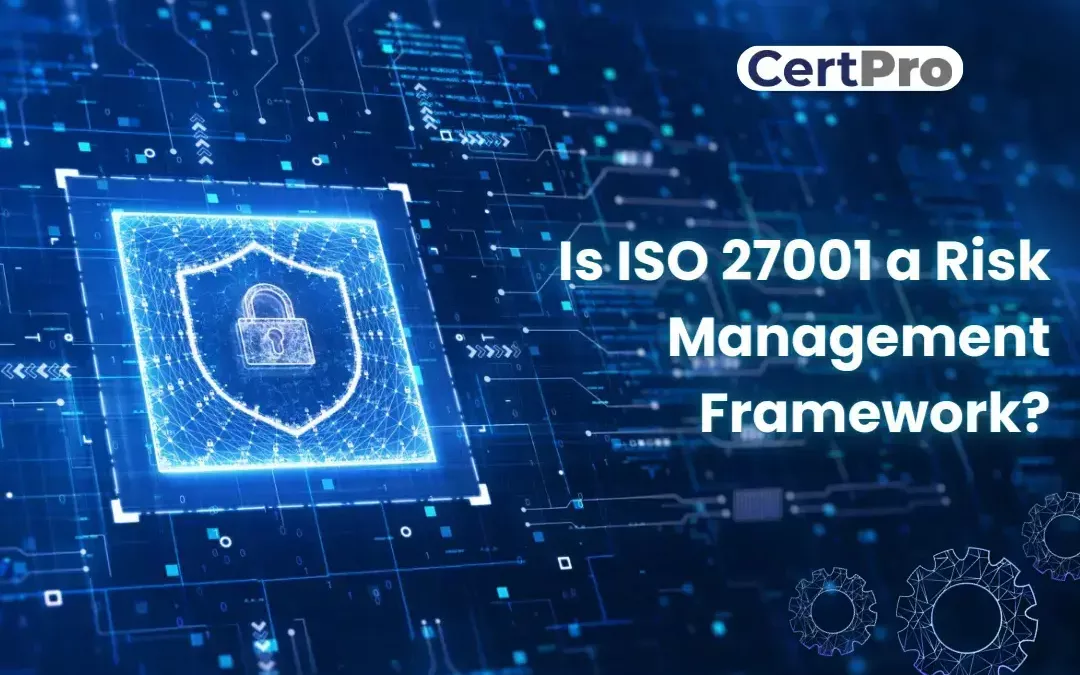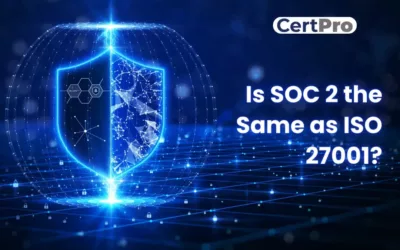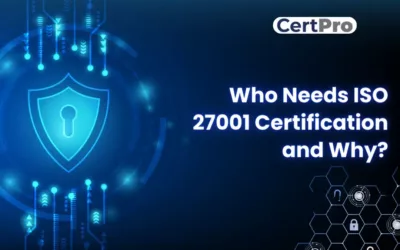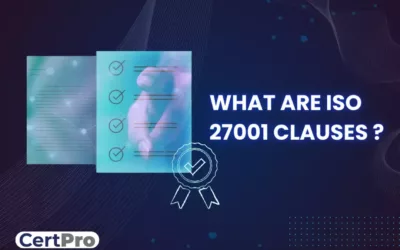The ISO 27001 standard provides a framework for information security, highlighting the importance of a thorough risk assessment procedure. Organizations use the methodical and complex ISO 27001 risk assessment process to identify and assess information security issues. In order to properly implement strategic plans to manage potential risks, this procedure includes estimating the likelihood and impact of certain risks. The creation of a reliable and affordable information security management system (ISMS) is essential to this strategy.
In order to achieve ISO 27001 certification, a thorough risk assessment and adherence to specified requirements are required. This entails locating, assessing, and designating owners for information security risks connected to the company’s assets that fall within the purview of the ISMS. The resulting risk treatment plan then becomes a pillar, prescribing actions for every risk that is found to guarantee the business’s overall security. The ISO 27001 risk assessment process emphasizes the proactive management of information security risks for a resilient and secure corporate environment. It requires a consistent and repeatable methodology, from criterion establishment to risk identification and owner assignment.
WHAT IS AN ISO 27001 RISK ASSESSMENT?
An organization can identify and assess its information security risks using the systematic process known as the ISO 27001 risk assessment, which quantifies the risks’ impact and likelihood. The creation of strategies to successfully reduce these hazards depends on this procedure. It occurs once a cost-effective and robust information security management system (ISMS) is established. Risk management must be approached thoroughly and meticulously due to the overall complexity of the process. This includes a smooth transition from risk detection to in-depth risk evaluation. Finally, using a carefully thought-out risk treatment plan, the company implements the identified risks and reduces them methodically. Proactive risk management is crucial within the ISO 27001 framework, and this approach’s integrated nature guarantees a strong defense against possible attacks.
MAIN STEPS IN ISO 27001 RISK ASSESSMENT
1. Risk identification: Make sure your business has a thorough inventory of its information assets before starting the risk management process. This includes databases, software, hardware, intellectual property, and other relevant components. After creating this asset list, go ahead and determine the risks connected to each item, taking availability, confidentiality, and integrity into account.
Threats and vulnerabilities can take many different forms. These might include things like improper data backup and poor password management, as well as crimes like espionage, embezzlement, and illegal access to databases. It’s critical to stress that these risks’ characteristics are arbitrary and dependent on a variety of variables, including the organization’s business model, operating environment, and Information Security Management System (ISMS) scope.
2. Assigning risk owners: This stage, which is often overlooked, is critical to determining how well your company’s risk assessment efforts are going. For every risk that has been identified, it is essential to designate risk owners. These are the people who will be responsible for keeping a careful eye on the risk and, if needed, carrying out the risk treatment plans that have been developed. This thoughtful assignment of responsibilities guarantees a methodical and responsible approach to risk management, greatly enhancing the overall efficacy of the company’s risk assessment procedure.
3. Risk analysis: The lack of a prescribed methodology for risk analysis and scoring in ISO 27001 necessitates the establishment of a uniform organization-wide strategy. You should be aware that this predetermined methodology will serve as the foundation for your risk analysis.
The next stage is to analyze the risks that have been identified once your risk universe has been defined and recognized. To do this, give each one a chance of happening and score the possible effects on a scale of 1 to 10, with 10 being the greatest influence. As an alternative, one may use a low-, medium-, or high-ranking scheme. This methodical examination offers an organized framework for thoroughly evaluating risks inside the company.
4. Risk calculation: A reasonable strategy for assessing risks is to classify them before assessing their impact. Potential risk categories could include financial, legal, regulatory, and reputational issues, among others, depending on the nature of your organization. It is important to rate the impact while taking into account factors like the impact’s likelihood and the speed at which it will manifest. These subtle components of the impact assessment help to create a more thorough and customized understanding of the risks, which in turn helps to create a more successful risk management plan that is in line with your company’s unique needs.
5. Implement a treatment and risk-reduction strategy: After the risks have been assessed and their respective impacts have been determined, the next critical step is to create a thorough plan for managing the risks. It is essential that this plan be fully documented.
In essence, the risk treatment plan summarizes how your firm will address the risks, vulnerabilities, and threats that were noted in your risk assessment. It’s important to understand that your ISO 27001 accreditation depends heavily on this document. During your certification audit and any ensuing periodic audits, external auditors will examine it in great depth. Maintaining ISO 27001 compliance requires thorough documentation of your risk treatment plan, which guarantees accountability and openness in handling possible hazards.
It is important to identify the criteria for accepting risks, or which risks are judged acceptable for your firm, before diving into your risk management tactics. This set of benchmarks will provide the foundation for creating an appropriate risk-reduction plan. Four possible approaches to risk treatment are outlined in the ISO 27001 standard. These choices consist of:
- Handle the risk: If the risk score is higher than what is considered acceptable, you can reduce its impact or likelihood by putting the security controls found in ISO 27001 standard Annex A into practice. Risks can be reduced by implementing a number of strategies, such as penetration testing, access control, security awareness training, and careful evaluation of vendor-related risks.
- Ignore the risk: Evaluating options for total risk avoidance is a different strategy to deal with hazards that have been identified. It is thus feasible to choose to completely avoid the risk if the risk-return matrix shows a substantial disparity. For instance, managing the physical security of production infrastructure or data centers can be completely eliminated in the case of a wholly remote corporation.
- Reduce the risk: Transferring a risk to a third party can, when practical, change the nature of the risk. This can be accomplished, for instance, by hiring suppliers, contracting out particular work duties, or getting insurance.
- Accept the risk: When it is possible, your risk treatment plan should try to reduce the risk levels related to your information assets to a manageable level. It is important to recognize that it is not always possible to completely eliminate all dangers. As such, it becomes essential to develop a detailed strategy that outlines what needs to be done in the event of a “risky eventuality.” This includes situations that could jeopardize the security of your data, such as data breaches and cybersecurity assaults. Effective incident response and incident management techniques should be part of your risk treatment plan.
- The Statement of Applicability and the Risk Treatment Plan: The Statement of Applicability and the Risk Treatment Plan are important documents in the ISO 27001 process. The Statement of Applicability lists the controls selected in reaction to hazards that have been identified, explains how they were implemented, and justifies any exclusions. The Risk Treatment Plan, which evaluates each risk’s acceptance, avoidance, transfer, and application of controls, serves as the basis for this decision. The steps taken for the chosen option are described in detail in the SOA, and in situations where risks are accepted, management permission with supporting paperwork is required.
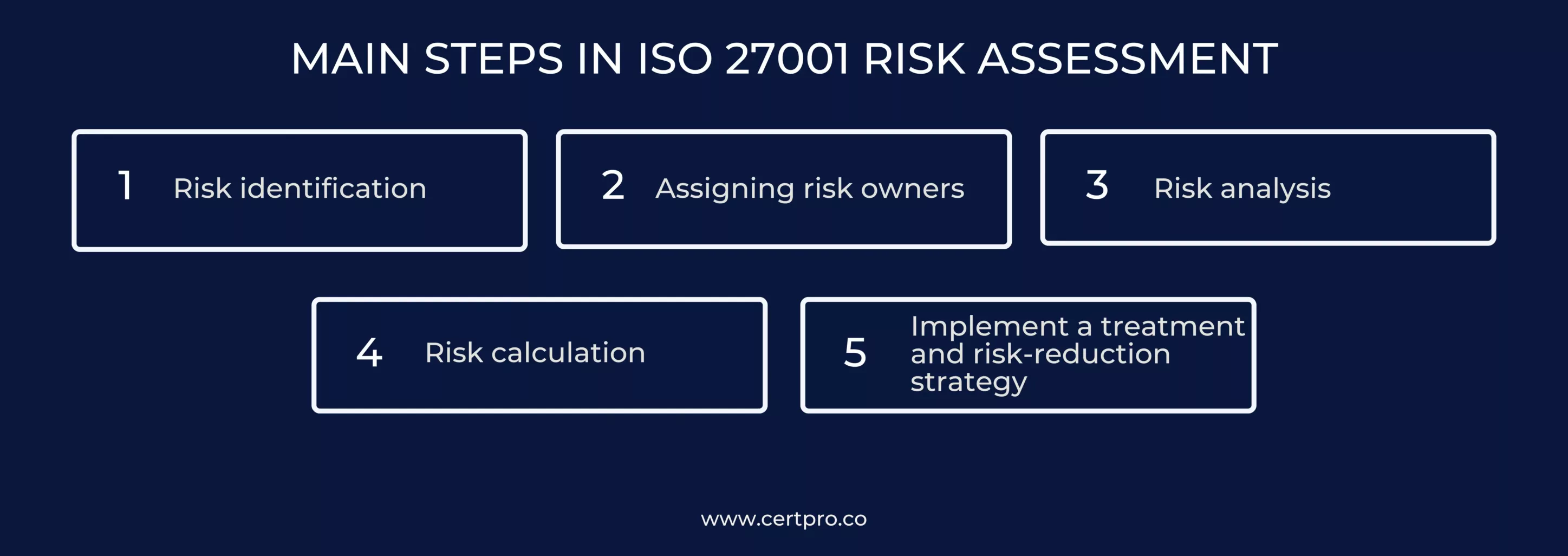
ISO 27001 RISK ASSESSMENT TEMPLATE
The major purpose of the risk assessment process is to implement a thorough risk treatment plan based on the ISO 27001 controls list to ensure that residual risk inside your firm is acceptable. With company continuity as the primary goal, it is critical to carefully select a risk assessment and treatment template.
While there are numerous free tools and templates for ISO 27001 risk assessment accessible, it is best to choose one that corresponds with your organization’s specific risk landscape. A simple spreadsheet with a rational approach to asset-based risk management could be a successful option. This ensures a customized and practical strategy for identifying and reducing risks within the context of the enterprise.
WHAT IS INFORMATION SECURITY RISK MANAGEMENT (ISRM)?
Information Security Risk Management (ISRM) is a systematic approach to managing risks associated with information technology use. It entails using a methodical strategy to recognize, assess, and reduce risks related to the availability, confidentiality, and integrity of an organization’s assets. ISRM seeks to protect private data from prying eyes, stop data tampering, and guarantee continuous access to vital resources. Organizations can put in place efficient safeguards for their information systems by recognizing possible risks and weaknesses. By taking a proactive approach to risk management, it is possible to gain a thorough understanding of the possible effects on IT assets, which facilitates strategic planning and the implementation of strong security measures. In the end, Information Security Risk Management is essential to preserving the security and resilience of a company’s digital infrastructure.
ISO 27001 RISK ASSESSMENT FRAMEWORK
It is crucial to make sure that your firm adopts a uniform approach to the ISO 27001 risk assessment framework. This emphasizes the necessity of developing detailed guidelines that clarify the procedure details.
Differentiated procedures among different organizational segments present a big risk assessment difficulty. As such, a crucial choice has to be made on the use of qualitative versus quantitative risk assessment techniques. Choosing the right scales for qualitative assessment and setting reasonable risk thresholds are two of the most important aspects of this decision-making process.
A structured ISO 27001 risk assessment framework should fully handle a number of important factors, including:
- Determine the most important security requirements that are unique to your company.
- calculation of the risk’s magnitude in relation to various organizational aspects.
- The organization’s established risk appetite will guide the assessment process.
- Define the risk assessment technique, taking into account assets or situations.
All things considered, using the ISO 27001 risk assessment framework will require careful preparation and adherence to set policies in order to promote a cohesive and efficient risk management strategy inside your company.
FAQ
Why is ISO 27001 risk assessment crucial for security measures?
ISO 27001 risk assessment is essential for establishing a robust information security management system (ISMS). It enables organizations to systematically identify and assess information security risks, providing a foundation for strategic risk management plans and ensuring the overall security of sensitive data.
What does an ISO 27001 risk assessment involve?
An ISO 27001 risk assessment involves a systematic process of quantifying the impact and likelihood of information security risks. It includes identifying assets, recognizing threats and vulnerabilities, assigning risk owners, and creating a risk treatment plan. This comprehensive approach ensures a methodical and effective risk management strategy.
Why is it important to assign risk owners in the ISO 27001 risk assessment process?
Assigning risk owners is crucial for accountability and responsible risk management. It ensures that individuals are designated to monitor and implement risk treatment plans. This thoughtful assignment enhances the overall efficacy of the organization’s risk assessment procedure.
Why is an Information Security Management System (ISMS) important for organizations?
An ISMS is crucial for organizations as it provides a comprehensive framework with rules, practices, and guidelines to systematically address and reduce information security risks. It ensures the efficient protection of sensitive data, strengthens defenses, and enhances the overall security of important data assets.
What is the significance of Information Security Risk Management (ISRM)?
Information Security Risk Management is a systematic approach to managing risks associated with information technology use. It involves recognizing, assessing, and reducing risks related to the availability, confidentiality, and integrity of an organization’s assets. ISRM is essential for protecting private data, preventing tampering, and ensuring continuous access to vital resources.

About the Author
ANUPAM SAHA
Anupam Saha, an accomplished Audit Team Leader, possesses expertise in implementing and managing standards across diverse domains. Serving as an ISO 27001 Lead Auditor, Anupam spearheads the establishment and optimization of robust information security frameworks.
IS SOC 2 THE SAME AS ISO 27001?
In today's digital landscape, ensuring the safeguarding of client data is paramount for businesses. Adhering to recognized compliance standards is vital to meeting this demand. ISO 27001 vs. SOC 2 represent two prominent benchmarks in the realm of data security with...
WHO NEEDS ISO 27001 CERTIFICATION AND WHY?
The esteemed ISO 27001 security framework is designed to evaluate the effectiveness of an organization's Information Security Management System (ISMS) in safeguarding its data. Obtaining ISO 27001 certification is a practical way for a corporation to demonstrate its...
WHAT ARE ISO 27001 CLAUSES
ISO 27001 clauses, a worldwide recognized standard, play an essential role in helping enterprises develop strong information security management systems (ISMS). This organized framework ensures a thorough defense against potential threats and weaknesses by offering a...

